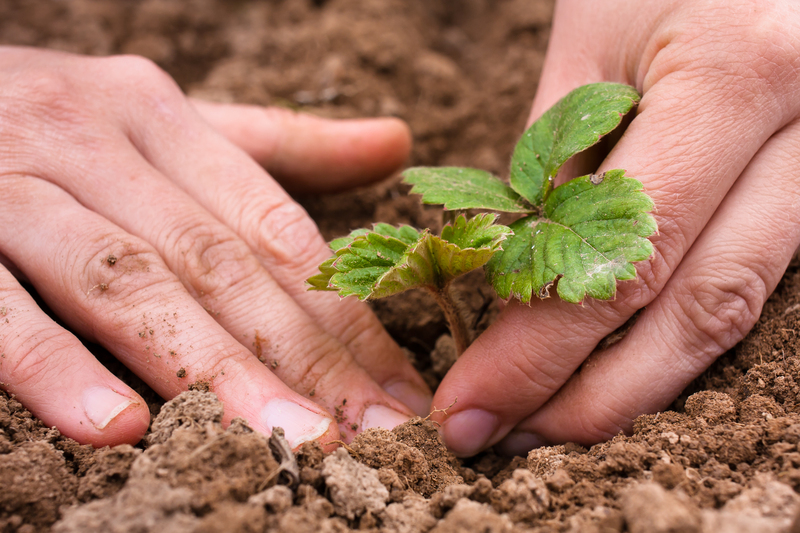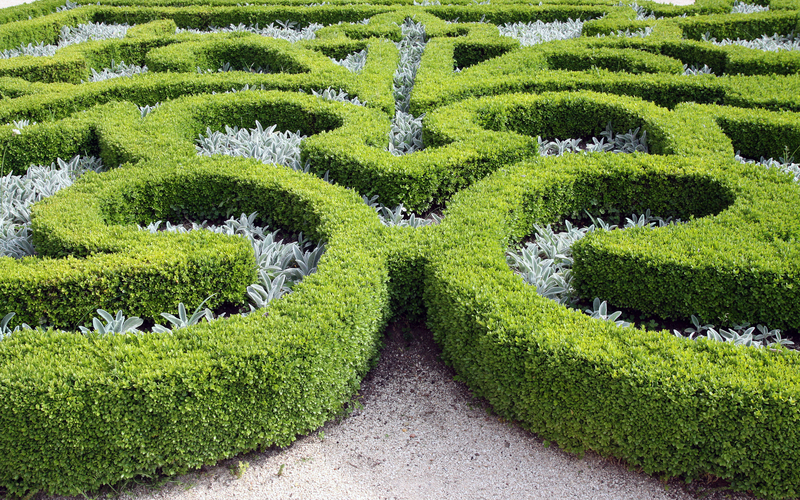Secrets to Thriving Herb Gardens
Posted on 28/08/2025
Secrets to Thriving Herb Gardens
Imagine stepping outside to a lush, green haven where the scents of fresh basil, rosemary, and mint waft through the air--where flavor and beauty thrive in perfect harmony. With the right techniques and insider knowledge, you can transform any space into a prolific, inspiring herb garden that rewards you year-round.
In this comprehensive guide, you'll unlock the best-kept secrets to flourishing herb gardens. We'll explore everything from soil selection and sunlight management to watering, pest prevention, and the ultimate harvest hacks. Ready to discover how you can nurture a sustainable, aromatic oasis at home?
Why Grow a Herb Garden? The Benefits Explained
- Fresh Flavors at Your Fingertips: Pluck sprigs straight into your recipes for the most vibrant culinary experiences.
- Natural Beauty: Herbs offer rich colors, textures, and delightful fragrances that enhance any garden space.
- Eco-Friendly Living: Homegrown herbs minimize packaging waste and carbon footprint compared to store-bought options.
- Health and Wellness: Many herbs possess medicinal properties and provide essential nutrients and antioxidants.
- Pollinator Paradise: Blossoming herbs attract bees, butterflies, and other beneficial insects to your garden.

Choosing the Right Location: Sunlight, Space, and Accessibility
Sunlight Requirements for Thriving Herb Gardens
Most herbs love the sun! For robust growth and optimal health, select a site that provides at least 6 hours of direct sunlight daily. South or west-facing windowsills, patios, or balconies typically work best for container herb gardens. In outdoor beds, avoid locations shaded by trees or structures.
Space Matters: Ground vs. Containers
Herbs are versatile and flourish in both traditional garden beds and container gardens. Key considerations include:
- In-ground beds: Ideal for larger harvests and perennial herbs (e.g., rosemary, sage, thyme). Ensure good drainage and easy access for harvesting.
- Containers: Perfect for balconies, patios, or indoor herb gardens. Use pots with ample drainage holes and a minimum depth of 6-8 inches for root growth.
Proximity = Convenience
Keep your herb garden close to the kitchen door or easily accessible windowsill. This helps ensure you'll use your herbs frequently and won't forget essential watering or harvests.
Soil Secrets: Creating the Perfect Growing Medium
Soil quality is a crucial factor for thriving herb gardens. Most herbs prefer well-drained, moderately fertile soil. Here's how to build the ideal blend:
- Texture and Drainage: Combine garden soil with organic matter such as compost or well-rotted manure. For containers, mix in perlite or coarse sand to boost drainage.
- pH Level: Aim for a slightly alkaline to neutral pH of 6.0-7.0. Test your soil using an at-home kit--add lime to raise pH or sulfur to lower if necessary.
- Fertility: While herbs dislike overly rich soil (which can reduce flavor), incorporating organic compost at planting gives them a gentle nutritional boost.
- Herb-specific needs: Mediterranean herbs such as thyme, oregano, and rosemary thrive in gritty, fast-draining mixes, while soft-leaved herbs (like basil and parsley) prefer more moisture-retentive soils.
Watering Wisdom: How to Hydrate Herbs for Health and Flavor
Understanding Herb Hydration
Overwatering is a common mistake that leads to root rot and stunted growth. Here's how to strike the perfect balance and keep your herb garden flourishing:
- Let it Dry: Most herbs like the soil to dry slightly between waterings. Stick your finger an inch into the soil; if it feels dry, it's time to water.
- Water Deep, Not Often: Give plants a thorough soak rather than frequent light sprinkles. This encourages roots to grow deeper and stronger.
- Morning Routine: Water early in the day to prevent evaporation and discourage fungal diseases.
- Choice of Water: Use rainwater when possible--chlorine and chemicals in tap water can stress sensitive herbs.
Top Secrets for Planting and Propagation
When and How to Plant Herbs for Success
Knowing the optimal planting times maximizes success in your herb gardens. Most annual herbs (such as basil and cilantro) thrive when sown after the last frost in spring. Perennials like oregano or sage can be planted in either spring or fall in milder climates.
- Seed Starting: Use seed trays or small pots with sterile seed-starting mix. Keep moist but not soggy until seedlings develop true leaves.
- Transplanting: Harden off seedlings outdoors for a week before planting into their final location.
- Spacing: Refer to specific variety packets, but most herbs require 6-12 inches between plants for airflow and growth.
Propagation for Unlimited Herbs
Propagating herbs from cuttings is simple and effective:
- Softwood Cuttings: Snip 4-inch sections of soft stems (such as mint, basil, or oregano). Strip the lower leaves and place in water or moist potting mix until roots develop.
- Division: For clumping herbs like chives or thyme, gently dig out and split established plants every 2-3 years to renew vigor.
Essential Maintenance for a Thriving Herb Garden
Pruning and Pinching for Lush Growth
Regular pinching (removing the top tips of stems) encourages bushy, productive herbs. For example:
- Basil: Pinch above a pair of leaves once plants reach 6 inches tall.
- Mint: Cut stems back by half in mid-summer to keep plants manageable.
- Rosemary & Thyme: Snip off up to one-third of plant to stimulate new growth.
Remove flowering stalks promptly on annual herbs (like cilantro and basil) to stretch out their harvest season and optimize flavor.
Weeding and Mulching
- Weed control is crucial--unwanted plants compete for nutrients and water.
- Mulch: Add a thin layer of organic mulch (like straw or shredded bark) around your herbs to suppress weeds and conserve soil moisture, taking care not to smother soft stems.
Pest & Disease Defense for Healthy Herb Gardens
Common Pests and How to Tackle Them
While many herbs repel pests naturally due to their aromatic oils, some invaders still persist:
- Aphids: Blast with a strong spray of water or apply insecticidal soap. Introduce ladybugs if outdoors.
- Slugs & Snails: Use copper tape, beer traps, or hand-pick at dusk.
- Spider mites: Remove infested plants and maintain higher humidity levels.
Preventing Disease
- Airflow: Space plants to allow for good circulation and dry leaves.
- Sanitation: Remove dead leaves and avoid overhead watering to prevent fungal illnesses.
- Rotate Crops: Change herb locations annually to prevent soil-borne diseases.
Harvesting Herbs: Enjoying Flavor at Its Peak
How and When to Harvest for Maximum Flavor
The best-kept secret to maximum herb flavor is proper harvesting technique. Follow these tips:
- Morning Harvest: Pick herbs after the dew dries but before the sun becomes hot--concentrated essential oils boost flavors and aroma.
- Selective Snipping: Always cut with clean, sharp scissors just above leaf nodes to encourage regrowth.
- Don't Strip Bare: Never take more than one-third of a plant in a single harvest; this ensures continued vigor.
Preserving Your Herb Harvest
Enjoy year-round flavor by drying, freezing, or infusing your herbal bounty:
- Drying: Tie small bunches and hang in a well-ventilated area away from sunlight.
- Freezing: Chop herbs and mix with olive oil, then freeze in ice cube trays for instant flavor boosts.
- Herb Infusions: Infuse oils or vinegars with your favorite herb blends for culinary and cosmetic uses.
Creative Ideas for Expanding Your Herb Garden
Unconventional Herb Gardening Spaces
- Vertical Gardens: Use wall-mounted containers or hanging pockets to grow herbs in small areas.
- Windowsill Planters: Brighten your kitchen with a mini edible garden.
- Companion Planting: Tuck herbs among vegetables or flowers to repel pests and enhance biodiversity.
Rare and Unique Herbs for Advanced Gardeners
- Lemon Verbena
- Sorrel
- Lovage
- Vietnamese Coriander
- Stevia
Experimenting with unusual herb varieties adds uniqueness to your herb garden and culinary adventures.
Seasonal Care: Year-Round Secrets for Thriving Herb Gardens
- Spring: Sow seeds, divide perennials, enrich soil with compost.
- Summer: Water consistently, deadhead flowers, watch for pests.
- Fall: Harvest and preserve herbs, mulch for winter protection.
- Winter: Bring containers indoors or provide cold protection for delicate herbs. Trim and use harvests for winter wellness teas and remedies.

Frequently Asked Questions: Herb Gardening Secrets Unveiled
What herbs grow best for beginners?
- Basil
- Mint
- Parsley
- Chives
- Oregano
These herbs are hardy, forgiving, and adapt well to both containers and raised beds.
How can I keep indoor herb gardens thriving?
- Provide lots of sunlight (8+ hours is ideal, supplement with grow lights in winter).
- Avoid drafts and severe temperature swings.
- Water thoroughly but allow soil to dry slightly between watering.
Can I grow herbs year-round?
Absolutely! Many herbs thrive indoors in pots on a sunny windowsill. Hardy perennials (like rosemary, thyme, and sage) can survive outdoor winters with basic protection.
Conclusion: Cultivating the Ultimate Herb Garden Sanctuary
With the right blend of knowledge, care, and creativity, you'll unlock the secrets to thriving herb gardens--no matter your space or skill level. From choosing the perfect location and soil to mastering watering, pruning, and pest control, every step brings you closer to an abundant, fragrant, and health-promoting oasis.
Ready to plant your own paradise? Start small, experiment with new herb varieties, and enjoy the journey as your herb garden flourishes season after season. For more expert gardening advice, check back regularly or subscribe to our newsletter!

